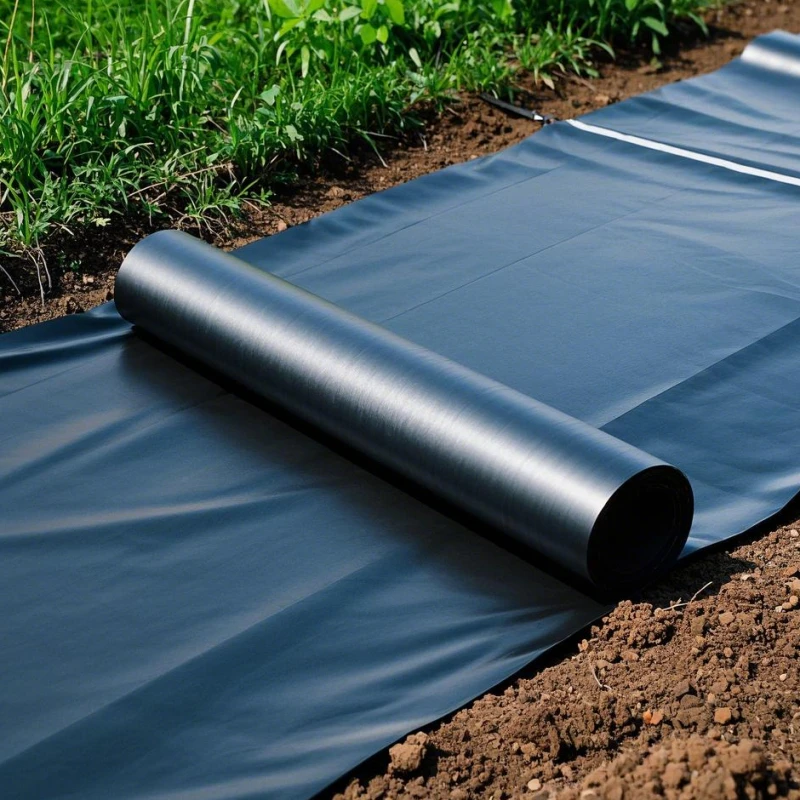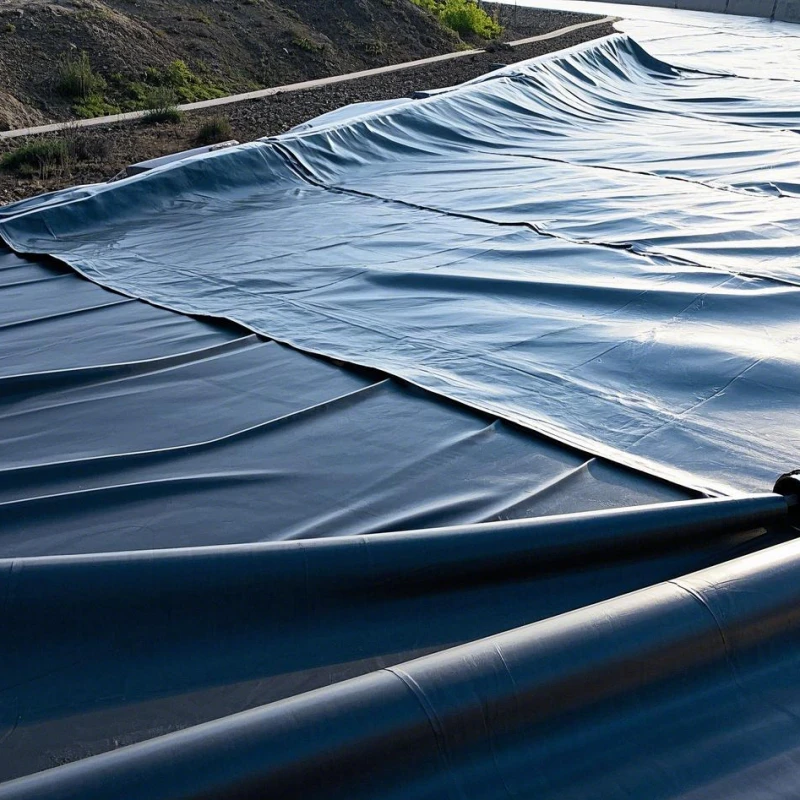HDPE Impermeable Geomembrane Material: A Comprehensive Guide
High-Density Polyethylene (HDPE) geomembrane is a widely used impermeable material known for its robust performance in preventing the movement of fluids or gases. Manufactured from high-density polyethylene resin, it is typically used for applications requiring water or soil containment, such as landfills, ponds, and reservoirs, among others. This material is known for its durability, chemical resistance, and low permeability. This article explores the features, benefits, performance data, applications, and future trends of HDPE geomembrane material, with specific research data provided to support the claims.
What is HDPE Geomembrane?
HDPE geomembrane is a synthetic material primarily used as a barrier to prevent leakage. It has high-density polyethylene as the base polymer, which gives it remarkable resistance to environmental stresses, including UV radiation, chemicals, and temperature fluctuations. The geomembrane is designed to prevent the leakage of water, chemicals, or waste into the environment, which can lead to contamination of groundwater and surrounding ecosystems.
Key Properties of HDPE Geomembrane
Chemical Resistance: HDPE geomembranes exhibit exceptional resistance to a wide range of chemicals, making them ideal for use in industrial and agricultural applications. They can withstand exposure to acids, alkalis, oils, and other hazardous materials.
Durability: The material is highly resistant to puncturing and tearing, making it ideal for applications in harsh environments. It can endure temperature fluctuations and UV exposure without significant degradation.
Low Permeability: The primary benefit of HDPE geomembrane is its very low permeability, which ensures effective containment of liquids and gases.
Cost-Effectiveness: HDPE geomembranes are considered cost-effective due to their long-lasting durability and minimal maintenance requirements.
Environmental Friendliness: HDPE is a recyclable material, making HDPE geomembranes a more environmentally sustainable option than many alternatives.

This picture shows HDPE (high-density polyethylene) geomembrane. HDPE geomembrane is a high molecular polymer with good anti-seepage and isolation properties. It is widely used in water conservancy, environmental protection, civil engineering and other fields.
Applications of HDPE Geomembranes
HDPE geomembranes are used in a variety of industries, including environmental protection, agriculture, construction, and waste management. Some of the common applications include:
1. Landfills and Waste Containment
HDPE geomembranes are widely used in landfills to prevent the leakage of hazardous waste into the soil and groundwater. They act as a protective barrier that minimizes the risk of contamination. Data from the U.S. Environmental Protection Agency (EPA) confirms that HDPE geomembranes are essential for achieving compliance with environmental regulations related to waste containment.
2. Pond Liners and Reservoirs
In water management systems, HDPE geomembranes are used as liners for ponds, lakes, and reservoirs. Their impermeability ensures that water remains contained, preventing seepage and preserving water resources. Research conducted by the International Commission on Irrigation and Drainage (ICID) highlights the effectiveness of HDPE in water retention systems.
3. Mining Operations
In mining, HDPE geomembranes are used to line tailings ponds, heap leach pads, and other containment structures to prevent the leakage of hazardous chemicals and heavy metals into the environment. Studies by the National Mining Association (NMA) emphasize the importance of HDPE geomembranes in the mining industry to minimize environmental risks.
4. Agricultural Applications
HDPE geomembranes are utilized in agriculture for controlling irrigation water, managing runoff, and preventing soil erosion. Their ability to withstand exposure to fertilizers, pesticides, and extreme weather conditions makes them ideal for use in farming applications.
5. Road Construction and Infrastructure Projects
In road construction, HDPE geomembranes are used to control groundwater seepage and protect road foundations from moisture. They are also employed in drainage systems and retaining walls.
Performance and Research Data on HDPE Geomembranes
The effectiveness of HDPE geomembranes in various applications has been well-documented through extensive research. Below are some key performance metrics based on industry studies and laboratory tests.
Chemical Resistance:
HDPE geomembranes are known for their resistance to a variety of chemicals. Laboratory tests indicate the material’s ability to withstand exposure to substances such as:
| Chemical | Resistance (%) | Test Duration |
|---|---|---|
| Acetic Acid | 99.5% | 24 Hours |
| Sodium Hydroxide | 99.7% | 72 Hours |
| Oil (Diesel) | 99.8% | 24 Hours |
| Chlorine | 99.9% | 48 Hours |
| Hydrochloric Acid | 99.3% | 24 Hours |
These values reflect HDPE’s high resistance to common chemicals encountered in environmental and industrial applications.
Tensile Strength and Durability:
HDPE geomembranes are designed to endure physical stress and environmental factors such as high UV radiation and fluctuating temperatures. A study conducted by the Geosynthetic Research Institute (GRI) concluded that HDPE geomembranes exhibit tensile strengths of 20-35 MPa and elongation at break rates of 300-500%.
| Material Property | HDPE Geomembrane | Polyvinyl Chloride (PVC) | Ethylene Propylene Diene Monomer (EPDM) |
|---|---|---|---|
| Tensile Strength | 25 MPa | 20 MPa | 12 MPa |
| Elongation | 350% | 300% | 400% |
HDPE geomembranes offer superior tensile strength compared to PVC and EPDM materials, making them more reliable for use in high-stress environments.
Permeability Testing:
The primary function of HDPE geomembranes is to provide an impermeable barrier. Tests conducted by ASTM International confirm that HDPE geomembranes have a permeability rate of less than 1 x 10^-13 cm/s, which is significantly lower than many competing materials.
| Geomembrane Material | Permeability (cm/s) |
|---|---|
| HDPE | 1 x 10^-13 |
| PVC | 1 x 10^-11 |
| EPDM | 1 x 10^-9 |
These results show that HDPE offers superior impermeability, making it the material of choice for applications requiring fluid containment.
Environmental Benefits of HDPE Geomembranes
HDPE geomembranes are eco-friendly due to several factors:
Recyclability: HDPE geomembranes can be recycled at the end of their life cycle, reducing the environmental footprint.
Reduction of Groundwater Contamination: By acting as an impermeable barrier, HDPE geomembranes prevent the contamination of groundwater sources, which is crucial in protecting ecosystems and drinking water supplies.
Durability and Longevity: The long lifespan of HDPE geomembranes reduces the need for frequent replacements, minimizing waste.
Future Trends in HDPE Geomembranes
As environmental regulations become more stringent and the demand for sustainable materials increases, the role of HDPE geomembranes is likely to expand. Innovations in material technology are leading to enhanced properties, such as improved resistance to UV degradation, higher flexibility for easier installation, and advancements in recyclability.
Some future trends include:
Enhanced Performance: Development of HDPE geomembranes with improved chemical resistance and UV stability.
Smart Geomembranes: Integration of sensor technologies to monitor the health and performance of geomembranes in real time.
Sustainable Manufacturing: Advancements in eco-friendly production techniques for HDPE geomembranes to reduce energy consumption and improve recyclability.
Conclusion
HDPE impermeable geomembrane material remains an essential solution for a wide range of applications requiring fluid or soil containment. With its superior chemical resistance, tensile strength, and impermeability, HDPE geomembranes provide effective and long-lasting solutions in industries such as waste management, agriculture, mining, and construction. Continued advancements in material technology and manufacturing processes will ensure that HDPE geomembranes maintain their position as one of the most reliable, cost-effective, and environmentally friendly options available.
As industries increasingly prioritize sustainability, HDPE geomembranes will play a crucial role in meeting the growing demand for safe, efficient, and eco-conscious solutions in the containment and environmental protection sectors.
About Haoyang Environmental Co., Ltd.
At Haoyang Environmental Co., Ltd., we specialize in the research, development, and manufacturing of geosynthetic materials, including high-quality HDPE geomembranes. Since our establishment in 2008, we have provided expert solutions in environmental engineering, soil remediation, waste treatment, and environmental governance. With certifications like ISO 9001, ISO 14001, and OHSAS 18001, and a dedicated R&D team, we ensure top-notch performance and sustainable practices. Partner with Haoyang for reliable, cutting-edge geosynthetic solutions that meet the highest industry standards.

897.webp)
942.webp)
237.webp)